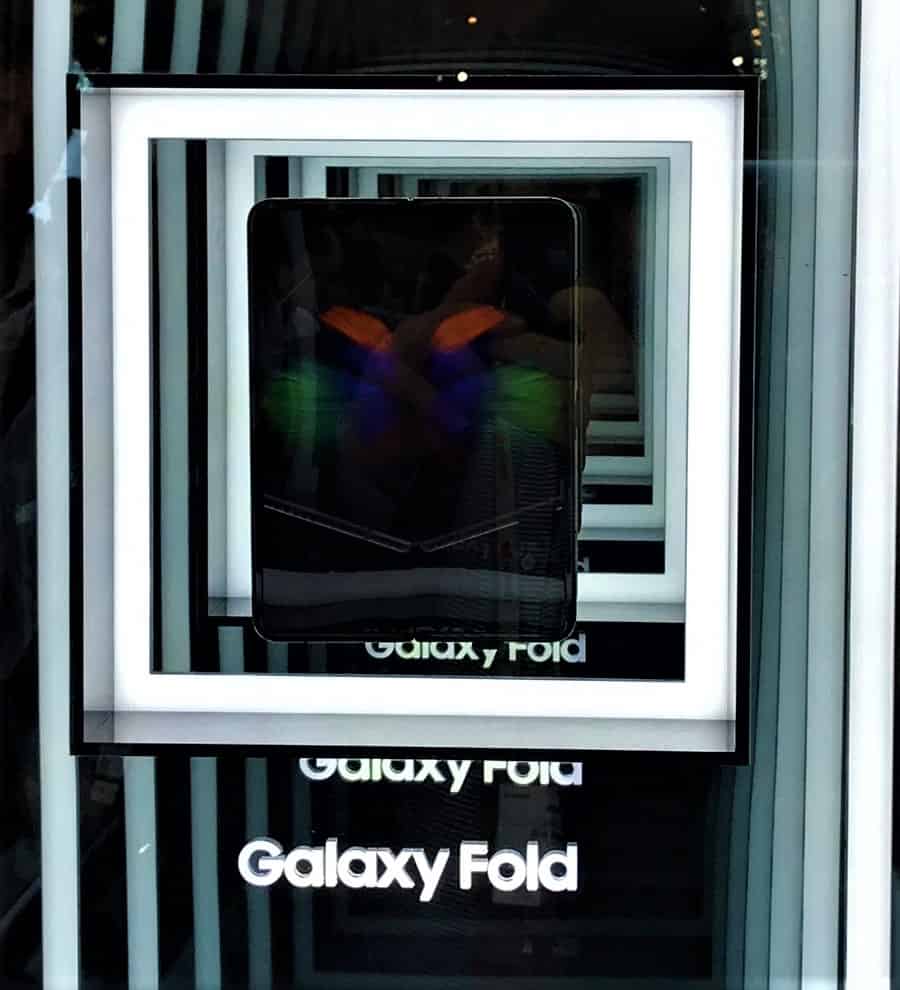
MWC19 Barcelona: smartphones return to the fold
We’ve all heard about Apple’s declining smartphone sales, and a plateauing of handset sales in general. Most people now have one, and a pretty good one at that, so the extra bells and whistles (and costs) aren’t commanding consumers’ attention like they used to. However, the buzz around pretty smart – and pretty costly – devices is palpable here at Mobile World Congress (MWC) in Barcelona.
5G and folding phones
In recent years, handset launches have been pushed out of the limelight by IoT tech and robotics. It hasn’t helped that the latter have come on leaps and bounds, while the former have often been underwhelming, with new smartphones offering only small, incremental upgrades on their predecessors. This year, though, handsets have made a triumphant return.
Samsung was ahead of the game with its unveiling last Wednesday of the Galaxy Fold. This is a whole lot more than a phone, the company claimed, and instead offers users ‘a portal to an entire galaxy of connected devices and services that Samsung has developed over the years to make it easier for consumers [to] do the things that they couldn’t do before.’ Whether or not these are ‘things’ that consumers actually want to do – as opposed to just being able to do for the sake of it – will come to light in the Spring, when the handset will be available to purchase, for $1,980.
If this figure outprices many consumers, Huawei’s offering which launched on Sunday, may prove even more exclusive. At around $2,600, the Mate X is an impressive – albeit expensive – beast. Unfortunately, I’ve not been able to get my hands on one, but reviews have been positive and the Chinese manufacturer scores a point over Samsung by offering a 5G connection. Huawei has been embroiled in controversy recently, so its Mate X launch can be seen as a sign not only of innovation in tech, but a show of business strength and resilience.
5G may just be where Chinese brands in general finally gain the upper hand over their American rivals. Xiaomi and Oppo, for example, also used MWC19’s opening to launch 5G handsets, and both will be making a major push into Europe this year.
Sony screens 5G; opts for vision and sound
What will 5G mean for consumers? We may have to wait a few years for the effects to be fully realised – MWC organiser the GSMA announced that the number of 5G network launches and compatible devices will ramp up this year, and that 5G is on track to account for 15% of global mobile connections by 2025. The GSMA also reported that operators are investing a huge $160 billion per year on 5G network upgrades, meaning the offerings to consumers must be similarly significant if they are to get a return on this outlay.
One company which surprised me at MWC by not jumping on the 5G bandwagon was Sony. The megabrand used its MWC event yesterday to showcase the latest in its handset line-up – the Xperia 1. Instead of going down the next-gen connectivity route, Sony went back to its roots in top-spec sound and video innovation, creating a large-screened 4K HD-ready OLED handset with multi-dimensional Dolby Atmos audio. Still priced at a hefty $1,110, the Xperia a nonetheless manages to undercut its rivals on the cost front.
The choice of 5G benefits in the future or a great entertainment experience in the now, is a tricky one. However, unless I manage to win the lottery while I’m at MWC, both these handsets – plus many more to be launched at this week’s show – will sadly remain out of reach!
Follow our updates from Barcelona on Twitter, and find out more about how we can help your company shine at MWC.





